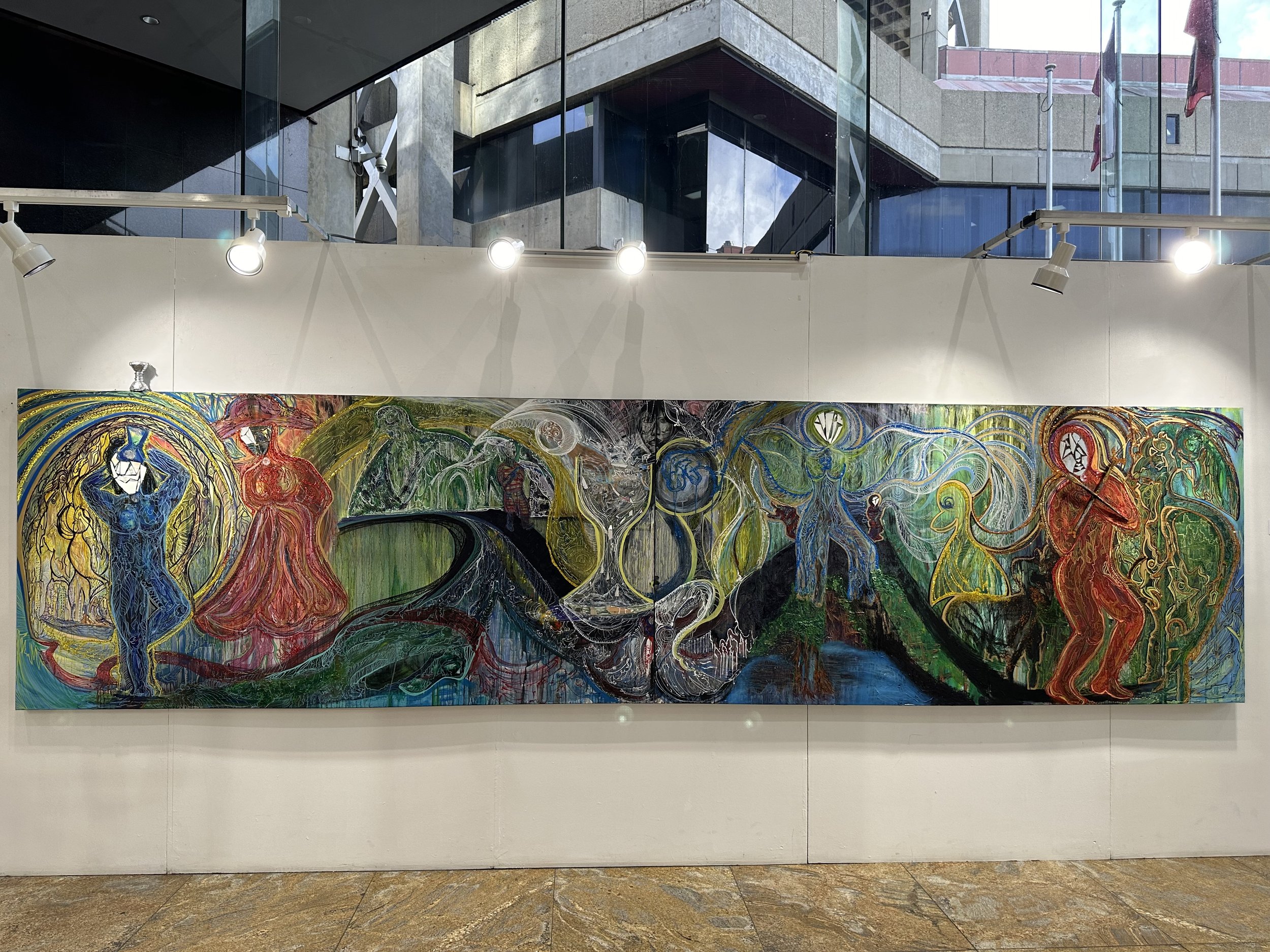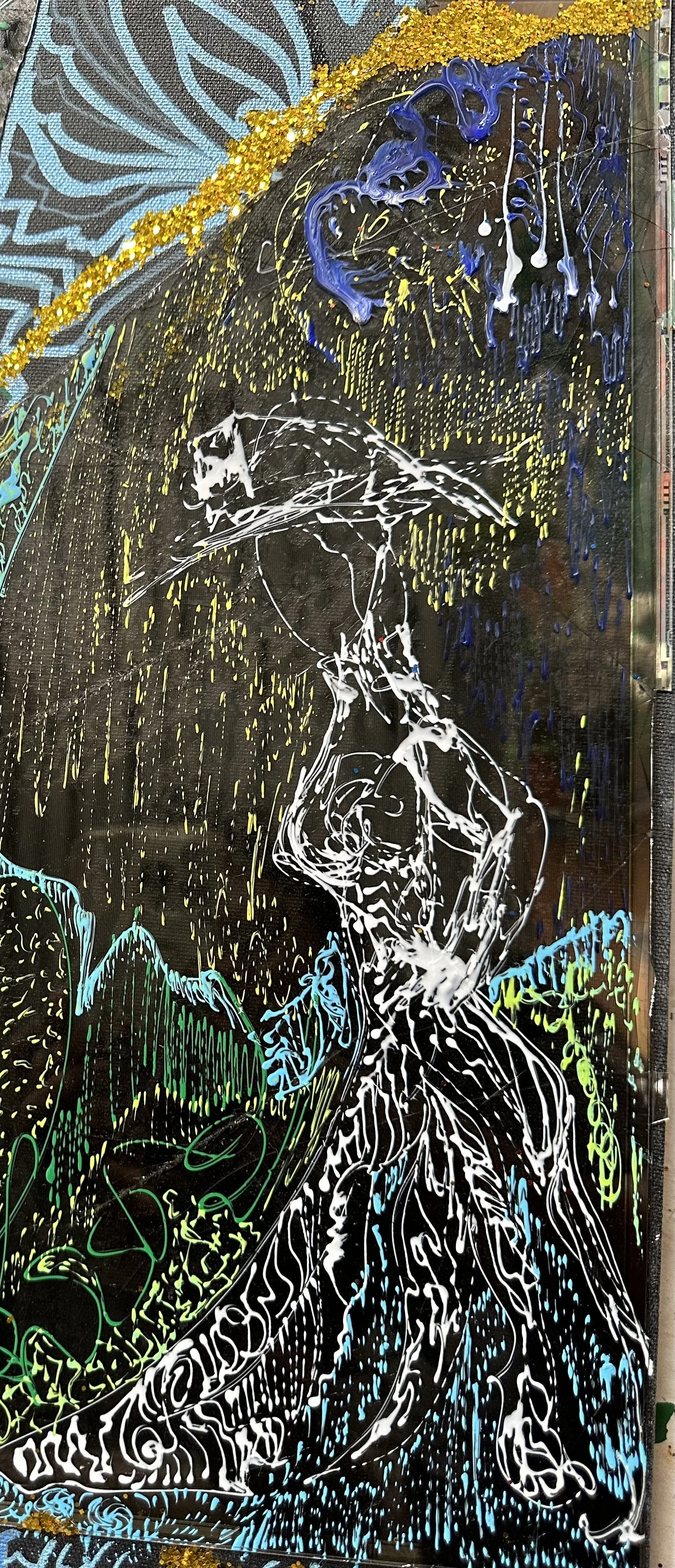
🌍✨When The Night Changes 🌍✨
explores worldbuilding through the three spheres of existence outlined in Yoruba Cosmology:
The Ancestral - Above War Ta
The Living - Jouvay
The Unborn - 5 Jumbies of Jouvay
Each section is anchored by a central artwork that embodies these themes.The exhibition features sketches, 3-dimensional, and relief paintings that guide visitors through themes of identity, community, and cosmic origins, encouraging a deeper understanding of cultural heritage and innovation.
Co-imagining a Caribbean creation story using African, Indian, and Indigenous cosmology, 5 Jumbies of Jouvay are set within the night festivals of Jouvay and Shivratri. Each character is adapted to overcome the Kübler-Ross 5 stages of Grief in a quest to reclaim cultural heritage. It recreates self and identity through traditional Mas characters and deities from Orisha and Hindu spirituality, referencing historical migration within the Caribbean and the cultural innovation arising from these movements.
Above War Ta
Triptych (3) - 4ftx8ft
Mixed Media 3D Paintings - Acrylic paints & mediums , sand, styrofoam, glass, mirror, glass paint on repurposed television screens, LED reflectors, circuit boards, puffy fabric paint, gems, glitter
“Above War-TA" depicts a meeting point where the physical and spiritual worlds converge for the conception of life. This triptych proposes a Caribbean story of creation, co-imagining iconography from African, Indian, and Indigenous cosmologies to illustrate the spatiotemporal structure of the cosmos.
The spark of fire that filled the mbungi and created the kalunga line, is referenced from Kongo Cosmology, to illustrate the universe's creation. Hindu beliefs describe the introduction of water to earth through Goddess Ganga’s descent via Shiva’s locks inspire the piece. The arrangement rests atop the back of a turtle, as depicted in many Indigenous and Asian cultures.
The triptych alludes to Caribbean history and geography by portraying a map of the "Triangle of Trade" within the historical context of British colonialism in the Caribbean. This map parallels the concept of Samudra Manthan from Shivratri, where the churning of the ocean generated both wealth and poison, serving as a comparative examination of the wealth generation and environmental destruction resulting from Caribbean colonialism.
The central figures in the artwork symbolises both mother and child, bridging the gap between the manifested and unmanifested realms of our mental and physical worlds. Elephants on the wings of the triptych, are imagined on either side of the kalunga river, guarding the crossover between the spiritual and physical worlds. These elephants, inspired by depictions of Goddess Lakshmi emerging from the events of Samudra Manthan symbolise the balance between wealth creation, and environmental conservation.

JOUVAY ⇌ Kambule + Baraat





5 Jumbies of Jouvay
he 5 Jumbies of Jouvay series draws on the rich history of Caribbean Carnival traditions, rooted in both celebration and resistance. This body of work highlights the historical and cultural intersections of Caribbean festivity and the struggles associated with colonization and loss. Each character in the series represents one of the Five Jumbies of Jouvay, drawing inspiration from the Bakongo Cosmogram to explore the cyclical stages of life and grief.
Positioned along the phases of the sun—moving anticlockwise, like traditional Jouvay parade routes—the jumbies’ appearance evolves to reflect life’s transitions, from birth and maturity to death and ancestral influence. Each jumbie embodies a stage of grief, creating a dialogue between community, resilience, and transformation. As they come alive in paintings and sculptures, the Jumbies invite viewers to reflect on personal and communal journeys through loss and renewal, questioning how we grow and endure in challenging times







